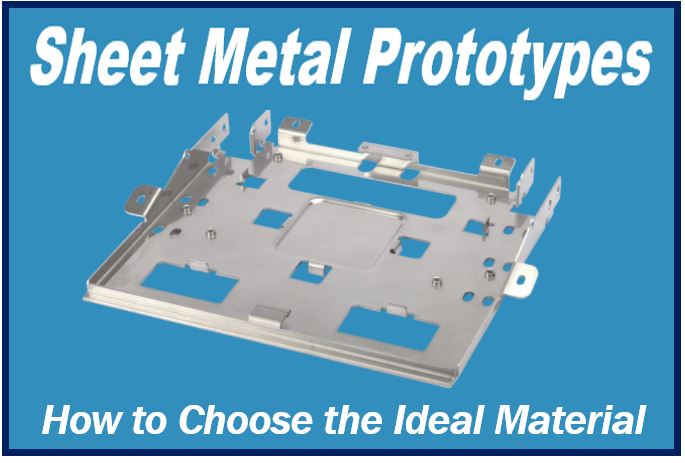Sheet metal is one of the essential building materials in the manufacturing industry and is fabricated from metals like brass, steel, nickel, aluminum, tin, and titanium.

The landscape of materials in the industry is vast, and it can be daunting to choose the right material for your sheet metal prototypes. With sheet metal fabrication undergoing various technological improvements and innovations, you should also adapt to the evolving trends by investing in the right material to cater to your needs.
To understand why material selection plays an important role, you must know certain factors before choosing the material.
- Material’s Cost
- Environmental Considerations
- Mechanical Properties Of The Material
- It’s Physical & Chemical Properties
Here are a few details you must keep in mind while choosing the sheet metal prototype material:
Purpose and End Use
Start with having clear goals and perspectives on how you are going to use the product. When you get a new perspective and re-envision metal products, you can even increase the product’s lifespan.
So think about what other parts the components will interact with and what conditions the sheet metal prototypes will be put to use.
Shape and Geometry
With the technological advancements in the manufacturing industry, different materials are easily customizable. Think whether your prototype requires simple bends or complex linear shapes.
Research and learn about the properties of different materials like steel, stainless steel, aluminum, copper, brass, and lead. Find out which material and process go well together to achieve your desired results.
Certain types of sheet metal are easier to bend than others. For instance, most aluminum grades are very ductile. The benefit of a sheet material that’s easily bendable is that you may be able to combine separate pieces. In effect, you can replace welding or screwing. It reduces piece count and eases assembly.
Requirement and Run Length
You have to consider the impact of the initial cash flow management and the long term return on investment the material will offer. Come up with the calculations and look into the estimated annual units you will require and whether the material you choose will balance the investment return.
Tooling cost amortization will give you the best return on investment. So think about that aspect as well before you zero in on a material.
Size of The Prototype
What is the size of the prototype you are designing? Each method can fabricate a certain amount of metal length. For example, roll forming allows you to fabricate parts up to 53 feet in length.
Analyze the size of the sheet metal prototypes, especially the length of the product. According to this, choose the right material and the process as well.
If you overlook choosing the right material, there are high chances of prototype failure during the manufacture. When you select the correct material for sheet metal prototypes, it will give your product a competitive edge by improving its function, quality, and performance. Get valuable guidance from experts and custom metal manufacturers before you get on with the process.
Learn more: https://yijinsolution.com/news-blog/2023-top-10-sheet-metal-fabrication-companies-in-china/
Interesting related article: “What is Manufacturing?“

